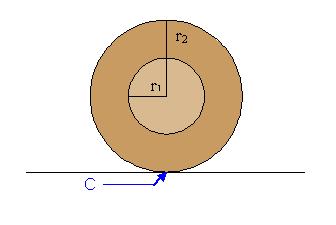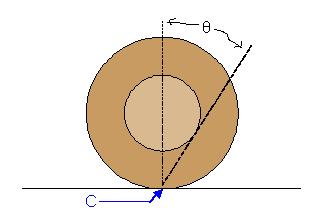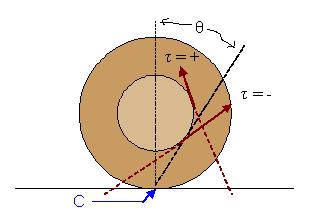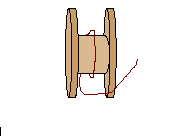The consequences of forces around a pivot and its critical angle are explored.
Watch The Video
Teachable Topics:
- Rotation
- Torque
- Yo-Yos
Theory:
Most people, when asked where the pivot point is on a spool of string that is on a flat surface, would intuitively say the center of the spool. However, this is not correct. The pivot point is actually at the point where the spool and the ground make contact, and is therefore called the contact point, C. When a torque is applied around this point, there are three possible outcomes. The spool can either roll away from the person pulling the string, it can roll towards them, or it can slide towards them.

Whether the spool will roll or slide, and in which direction, is dependent on a certain angle that is unique for every spool, and dependent on the size. This angle is called the critical angle, θ. It is measured from the vertical, down to the line that touches both the contact point and the inner radius, r1. It can be calculated by the equation θ = sin-1(r1/r2).

For forces that are applied along the critical angle, the angle between the moment arm and the force is zero, meaning no net torque and no rotation. This means the spool will slide when the force is applied along the critical angle, with no rotational motion, only translational.
For forces applied on angles above the critical angle, the spool will rotate in a counterclockwise direction, which is positive, and will cause the spool to roll away from the person pulling the string.
For forces applied on angles below the critical angle, the spool will rotate in a clockwise direction, which is negative,and will cause the spool to roll towards the person pulling the string.

Apparatus:
- A large spool with a cord or rope wrapped around it

Procedure:
- Place the spool on the ground or on a flat surface and pull on an angle that is greater than the critical angle. The spool should roll towards you.
- Pull on an angle that is less than the critical angle. The spool should roll away from you.
- Pull on an angle that is equal to the critical angle. The spool should slide with no rotational motion.



